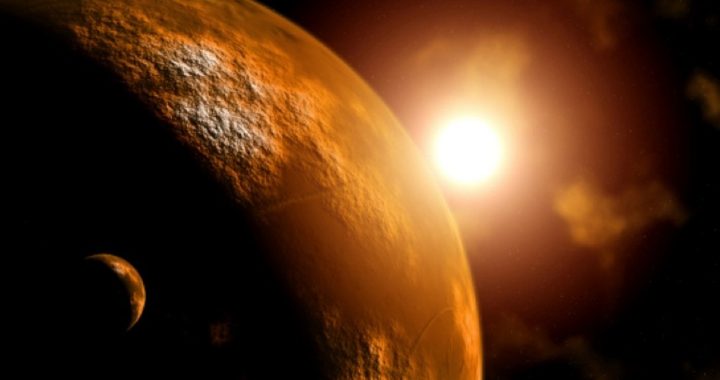
On July 20, 1969, three U.S. astronauts landed on the moon, fewer than 48 hours after Edward M. Kennedy splashed down at Chappaquiddick. The astronauts returned safe and sound. Kennedy’s passenger didn’t. It was a mind-altering weekend. No one had before imagined that riding in an automobile with a U.S. senator would be more dangerous than a trip to the moon.
Chappaquiddick and Martha’s Vineyard are still tourist destinations. The moon is still a place that astronauts would like to revisit, but no one wants to live there. In fact, NASA has ruled out a return of manned flights to the moon for the foreseeable future. Real adventurers will go to Mars.
That’s right, Mars, a mere 140 million miles away (on average, depending on where each planet is in its respective orbit). “Could humans live on Mars in the future?” is a question posed in an article entitled “NASA’s Next Giant Leap,” recently posted on the space agency’s website. “The journey to answer these questions has risks, but the rewards for humanity are worth it. Meeting the remaining challenges ahead of us to send humans to Mars will take the ingenuity and innovation of the entire nation and our international partners.”
In breathless wonder, NASA tells us of the technological marvels that will occur on our way to the Red Planet: the New Horizons mission that will “fly by Pluto,” the “robotic mission to rendezvous with a near-Earth asteroid,” the James Webb Space Telescope, successor to the Hubble, that will “extend our senses farther into space and time, to see light from the universe’s first stars.”
What we don’t see with our earth-bound eyes is a dollar sign anywhere in this exciting news. Visionaries aren’t fond of mundane concerns such as the costs of their pet projects. George W. Bush, who was never very good at counting costs, urged the nation to embrace the Mars mission in 2004. Bob Park of the American Physical Society recalled at the time that the president’s father was boosting a Mars mission when he was in the White House in 1989.
“He invoked Columbus, as they always do,” Park said. “He said like Columbus ‘we dream of shores we’ve never seen’ and went on to propose a return to the Moon and then on to Mars. And that lasted until they got a cost estimate.”
Cost estimates of the Mars mission appear to be rarer than moon rock and wide as the solar system, ranging from $6 billion to $500 billion or more. The race to put men on the moon has been pegged at $100 billion. The space station cost another $100 billion. In the famous words of the late Sen. Everett Dirksen (adjusted for inflation), a hundred billion here and a hundred billion there, and “pretty soon you’re talking about real money.”
In the beginning, the space program was all about national security. It was the “space race” with the Soviet Union, sparked by Sputnik, the satellite the Russians launched in 1957. Seeing a communist satellite in our night sky and hearing its beeping sound made America nervous, especially after our first attempt to match the Soviet feat ended with the explosion of a Vanguard rocket on the launching pad. “Sputternik,” said the New York Times. Project Vanguard had become “Project Rearguard,” Time magazine suggested. Senate Majority Leader Lyndon Johnson worried that the Russians would soon be “dropping bombs on us from space like kids dropping rocks onto cars from freeway overpasses.”
But beating the Russians to the moon was also a matter of American prestige, as well as an adventure for its own sake. We were in space, President Kennedy explained, for the same reason British explorer George Mallory said he wanted to climb Mount Everest: “Because it is there.” Alas, poor Mallory died on Everest. We’ll merely go bankrupt in outer space.
From the dawn of the space age to the present day, enthusiasts for space exploration have been boasting of the marvelous “spin-off” benefits in research and innovation that accrue from the space program, citing everything from infrared ear thermometers and artificial limbs to windshield de-icers and improved radial tires. But are there not more direct and efficient ways to promote research and development than by the scenic route to the planets and the stars? As former White House budget director David Stockman wrote years ago, NASA seemed to be saying, “The way to build a better mouse trap was to go to Jupiter.”
Going to Mars could even cure obesity, Frank Stratford wrote in The Space Review:
Take the obesity epidemic [as] an example: people are piling on the pounds, sitting around in front of the TV, and literally shortening their life spans while they do this. Exercise is the key to health and growth for bodies and minds, and this also applies to our society. Expansion to new frontiers should be seen as extremely valuable to us now. In a world that is struggling with political solutions to big problems like the environment, hunger, poverty, and disease, we need a challenge like Mars now more than ever.
So the way to improve the environment and fight hunger, poverty, and disease here on Earth is to go to Mars? Why, so we’ll notice the improvement when we get back? But wait. Space exploration might even be the way to brew a better beer. Reporting over the weekend on experiments with yeast in outer space, Wired.com noted:
In 2001, NASA took the first steps toward the space-beer frontier with a couple of experiments aboard the International Space Station. One, sponsored by Coors, tested the effects of weightlessness on fermentation and found that though the yeast acted a little strangely, it managed to do its job just about as well as on Earth. The other, sponsored by Coca Cola, looked into ways to handle carbonation in space and resulted in a contraption that controlled the pressure on the beverage by putting it in a plastic bag inside of a bottle.
“In heaven there is no beer,” according to a popular song of the Seventies. But perhaps there will be a better beer — and a Coke in a plastic bag — awaiting us on Mars. Heaven knows we will have paid enough for it.



